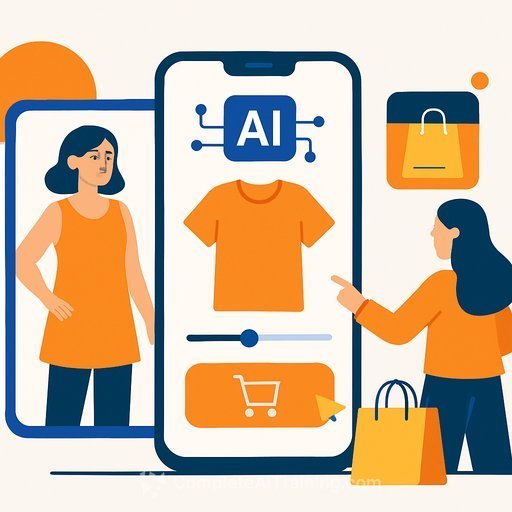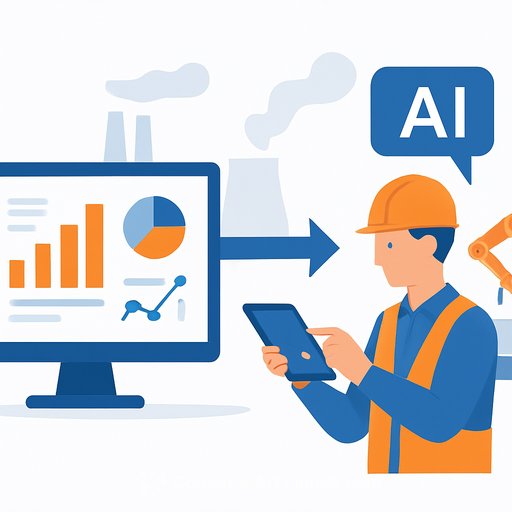Gap teams with Google Cloud to embed AI across operations
Gap Inc has signed a multi-year alliance with Google Cloud to build a unified AI platform across its brands-Old Navy, Gap, Banana Republic and Athleta. The stack centers on Google Cloud's Gemini, Vertex AI and BigQuery to speed product creation, upgrade customer experience and enable faster decision-making across teams. Announced on October 10, 2025, the move is positioned to drive efficiency from design to shelf while strengthening omnichannel performance.
What the platform includes
- Gemini: Generative AI for creative assistance, content, and natural language interfaces that simplify workflows.
- Vertex AI: End-to-end model development and deployment for forecasting, pricing and personalization at scale.
- BigQuery: Centralized analytics to unify product, inventory, marketing and customer data for real-time insights.
Gap already collaborates with Google on advertising, using Google Ads and AI to optimize placements and campaigns as part of its omnichannel strategy.
Operational impact you can expect
Design-to-shelf speed: AI-assisted design, planning and pricing shorten feedback loops. Expect tighter buy-plans, faster assortment testing and better inventory balance by channel and region.
Personalized marketing and CX: Smarter recommendations and segmented journeys improve conversion and loyalty. "Seamless consumer engagement" signals more consistent handoffs across web, app and store touchpoints.
Employee enablement: Frontline and support teams get decision support and workflow automation. Think guided service, next-best actions and faster exception handling.
Gap's CTO Sven Gerjets said: "We believe this partnership gives us the expertise and speed to bring AI to life across our business, empowering teams, sparking creativity and delivering for customers faster and with greater personalisation than ever."
What operations leaders should put in place
- Data foundation: Define your product, inventory and customer data contracts. Ensure SKU, location and customer IDs are consistent across systems feeding BigQuery.
- Governance and access: Role-based access, PII handling and audit trails for training and inference. Set data freshness SLAs tied to business decisions (pricing, allocation, labor).
- Model reliability: Create a model registry and promotion gates (offline metrics, A/B results, bias checks). Monitor drift and cost per prediction.
- Change management: Train by workflow, not by tool. Pair "AI champions" with store ops, merchandising, planning and customer care to drive adoption.
- Clear KPIs: Measure lead time from concept to shelf, forecast accuracy uplift, promo ROI, return rate, contact deflection, AOV and LTV. Tie models to financial impact.
- Pilot design: Run 6-8 week pilots with a single objective (e.g., price elasticity, size curve optimization, agent assist). Ship fast, then scale.
- Integration first: Connect the AI layer to core planning, OMS, POS and marketing automation. No orphaned insights-close the loop into execution.
- Human-in-the-loop: Keep approvals for price changes, assortment edits and customer-facing content until models prove stability.
Use cases to prioritize
- Merch & planning: Demand forecasting by style-color-size; regionalized buys; dynamic markdowns; size pack optimization.
- Supply & allocation: Replenishment triggers, transfer recommendations, lead-time risk flags.
- Marketing & CX: Next-best offer, creative generation with brand guardrails, on-site search and recommendations, churn prevention.
- Service & stores: Agent assist, knowledge search, intent detection, fraud and return risk scoring, labor scheduling signals.
Execution playbook (90 days)
- Week 0-2: Confirm data sources into BigQuery; define gold datasets and governance. Pick two pilots (e.g., demand forecast uplift, agent assist).
- Week 3-6: Build in Vertex AI; set evaluation metrics; integrate outputs into current tools (pricing engine, CRM, helpdesk).
- Week 7-10: A/B test in limited regions/queues; monitor lift, cost and latency; collect qualitative feedback from planners and agents.
- Week 11-13: Harden pipelines, address edge cases, publish SOPs and rollout plan; plan scale by brand and channel.
Key facts and context
Gap is expanding into beauty and accessories as it positions itself as a "high-performing house of iconic American brands." In Q2 fiscal 2025, net sales were $3.7bn, flat year-on-year; online sales rose 3% and represented 34% of total. This AI program is structured to improve those unit economics through cycle-time reduction, higher conversion and fewer stockouts.
Recommended resources
- Gemini for Google Cloud for multimodal assistants and natural language workflows.
- AI courses by job role to upskill operations, merchandising and customer care teams.
Your membership also unlocks:






